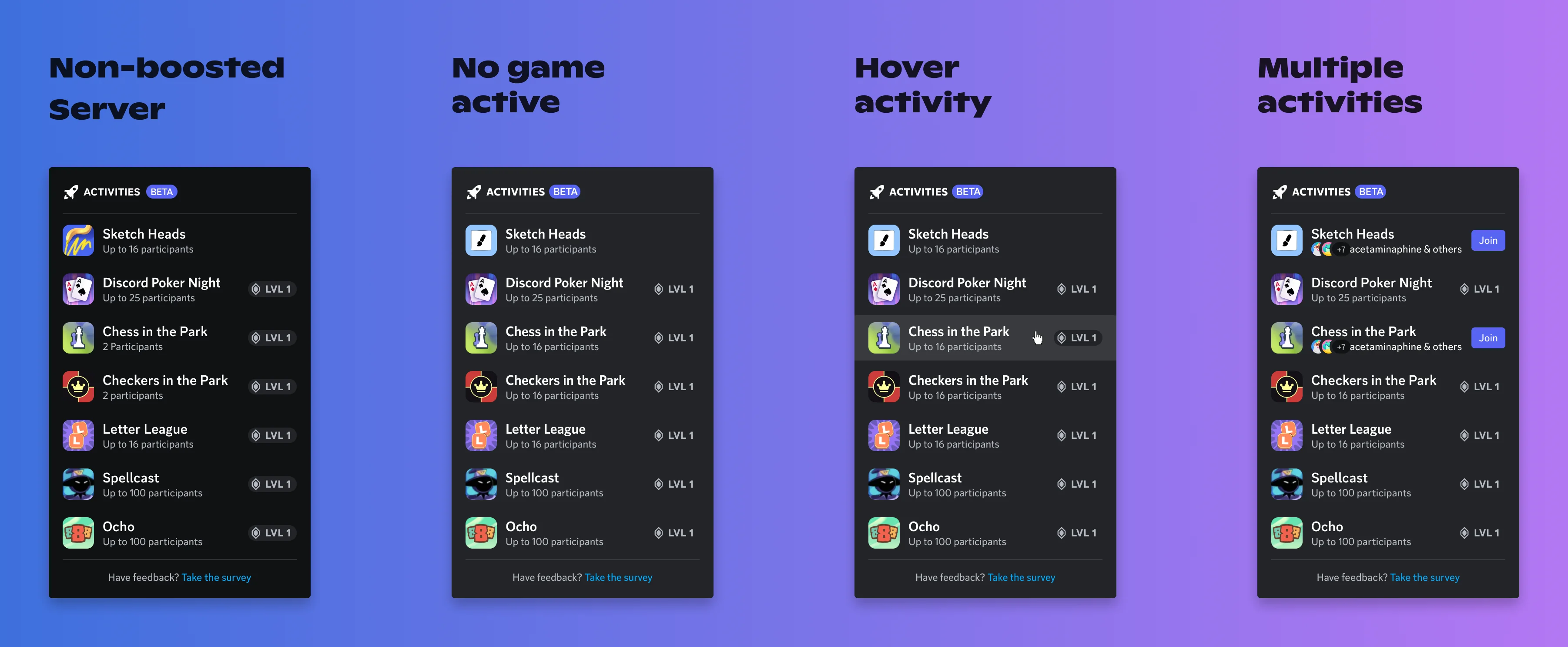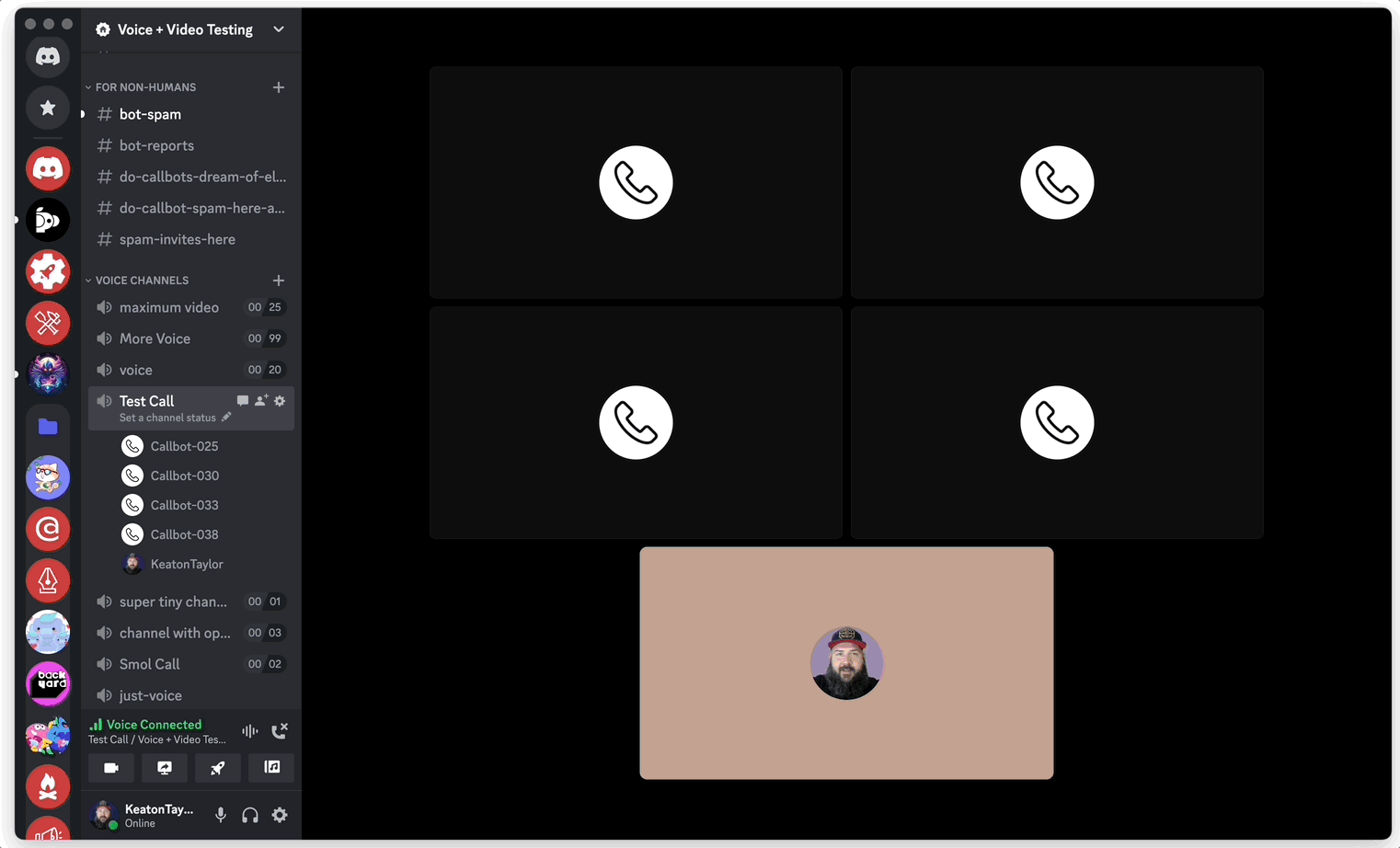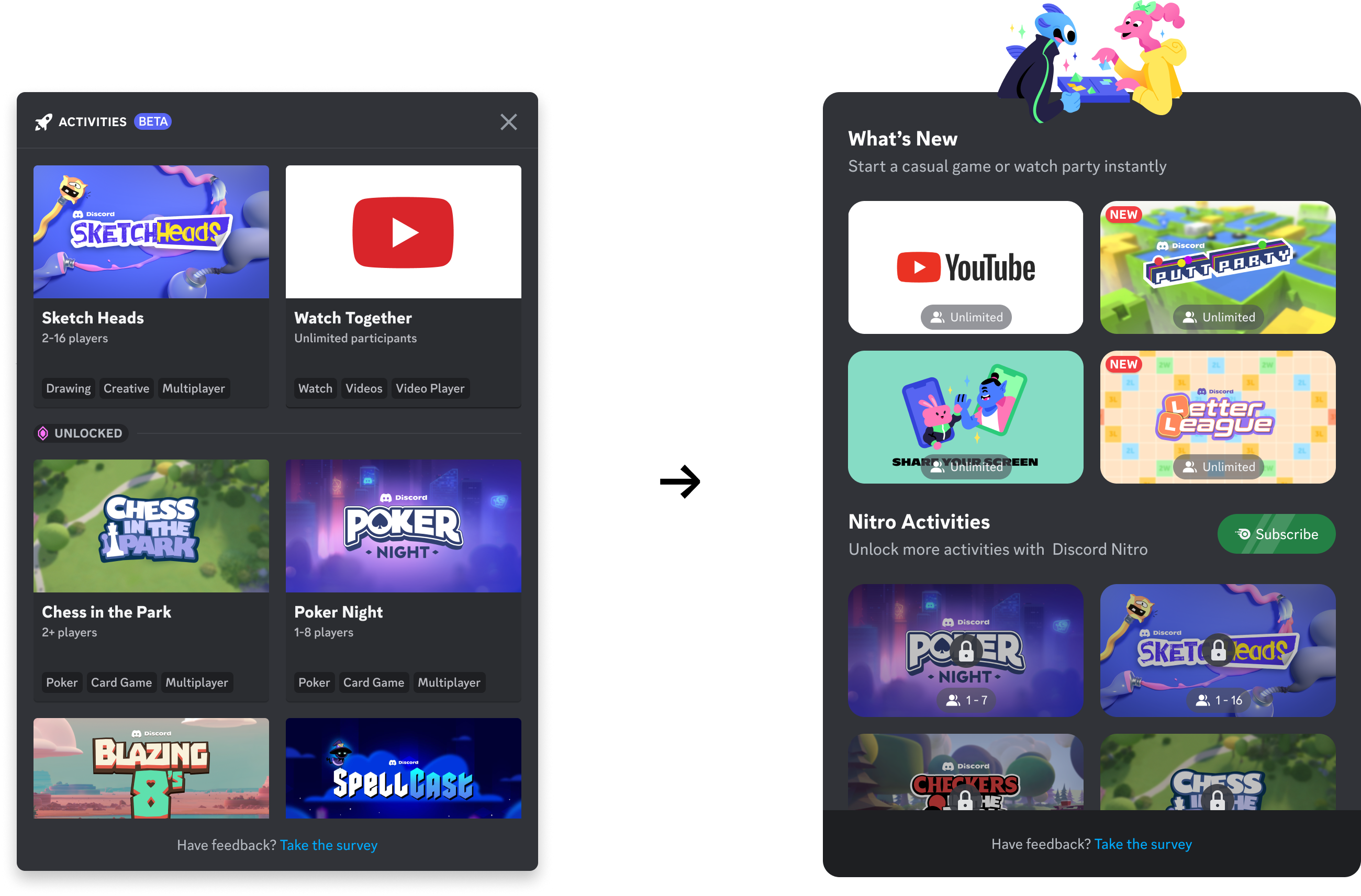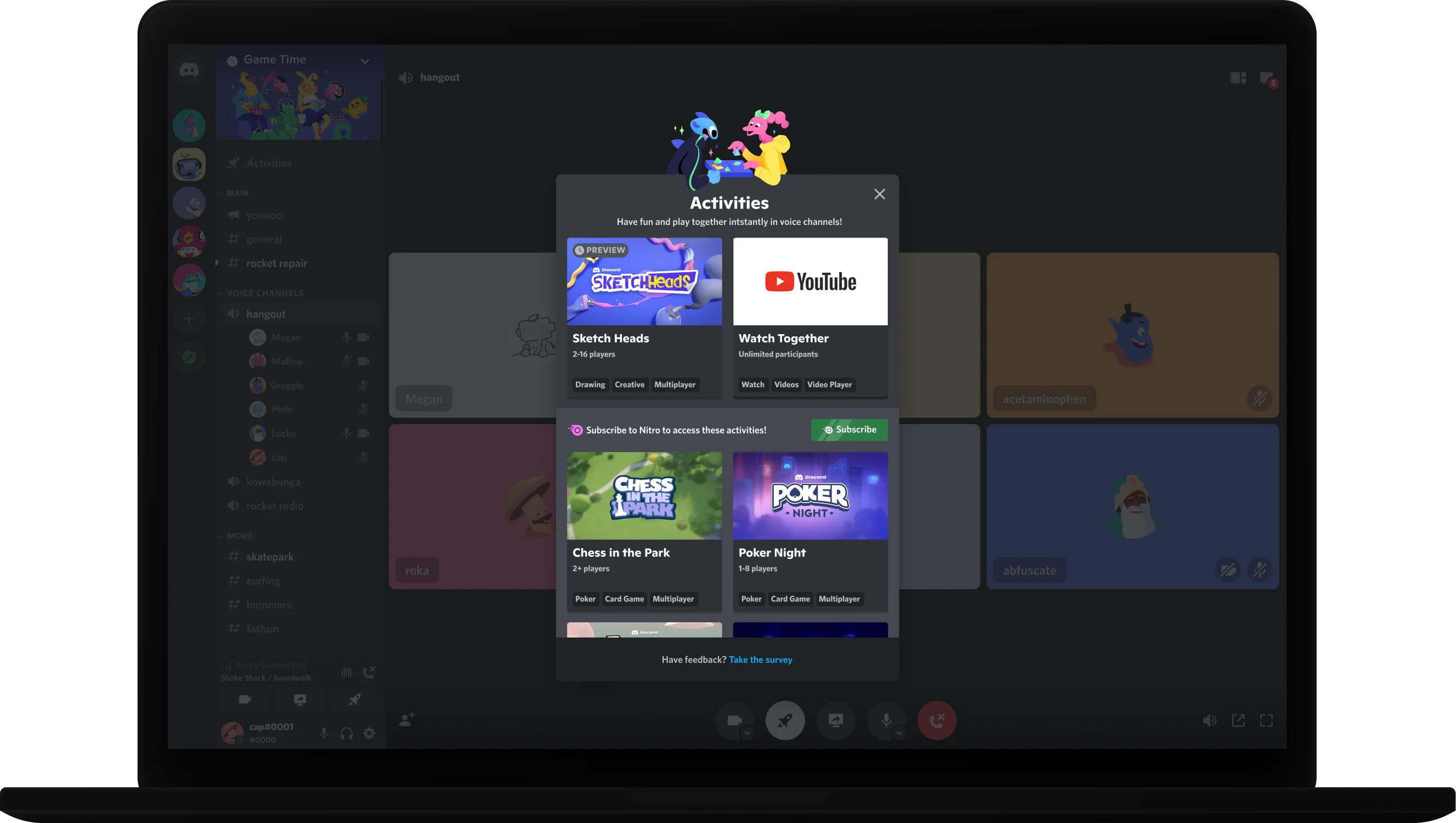The Challenge
In 2021, the team from Ubiquity6/Backyard scaled our pandemic social gaming product from an alpha version to over 1 million MAU in just over 8 months. Soon after, we were acquired into Discord and we were tasked with integrating our casual games into the much-beloved Discord platform. Discord's infrastructure was optimized for synchronous voice and chat — but we saw an opportunity to deepen engagement by layering in lightweight, casual gaming. The problem? There was no real estate for it, few shared UI patterns, and no appetite for complexity. The solution had to feel like Discord — fast, social, and invisible until it mattered.
Key Insight
Through early research and past learnings from our Backyard acquisition, we knew one thing: people play when it’s easy and frictionless. We found:
- Users were more likely to play when games were natively integrated
- Games launched via voice calls performed 2–3x better
- Monetization worked best when access was social, not individual
Users don’t want games in Discord. They want reasons to stay in Discord longer — games were a means to connection.
Design Approach
As the lead designer, I drove the UX from initial concept through global launch — including research synthesis, interaction design, monetization UI, and stakeholder alignment.
Framing Hypotheses
- Activities would increase user engagement with voice features
- Activities could drive paid subscriptions via Boosting or Nitro
- First-party games would unlock a broader developer ecosystem
Strategic Constraints
- Platform mismatch: Discord’s infrastructure wasn’t designed for real-time multiplayer games.
- Visual real estate: Activities had to live in existing control surfaces without overwhelming users.
- Executive pushback: We were steered away from chat interface changes, so voice became our entry point.
Shipping Strategy
Phase 1: Baseline Engagement (Alpha)
We launched a test bundle to 15% of servers (<100 members) to measure adoption. Entry points were added to the RTC panel and video UI. Result: 35% activation rate, far exceeding our 20% goal.

Phase 2: Willingness to Pay (Beta)
Next, we tested monetization by bundling Activities into server-level Boosts. We introduced a paid menu and “rotating free” game concept. We kept visuals aligned with Discord’s design system but leaned into new patterns for upsell and value communication.

Result: low six-figure MRR gain, and a 12% lift in Level 1 server boosting.
Evolution & Launch
Over the following months, I led design for:
- Activity Shelf: Full-featured UI for game discovery, promos, and rotation
- Mini Shelf: Lightweight hover-activated launcher with recommendation logic
- Voice UI Upsells: Reclaimed empty states in VC for contextual nudges and education

From Server Gating → User Gating
Later, we pivoted from server-based Boosting to individual Nitro access. I collaborated with PMs and engineers to ensure this rollout was seamless and predictable — rethinking UX flows, tooltips, and modals accordingly.

📈 Outcomes
- 2× MRR growth vs forecast
- 30%+ week-one retention on Activities servers
- 12%+ boost engagement lift during beta
- 0% negative impact on core metrics at launch
Reflections
This project was a masterclass in balancing innovation with platform constraints. We didn't just ship a game platform — we introduced a new layer of community connection. I grew as a systems thinker, partner to engineering, and advocate for product-led monetization.
Bonus
Discord Activities was featured in TechRadar as one of the platform’s most inventive additions:

Read more about how Discord is innovating with its new Activities feature. This might be a game-changer!
